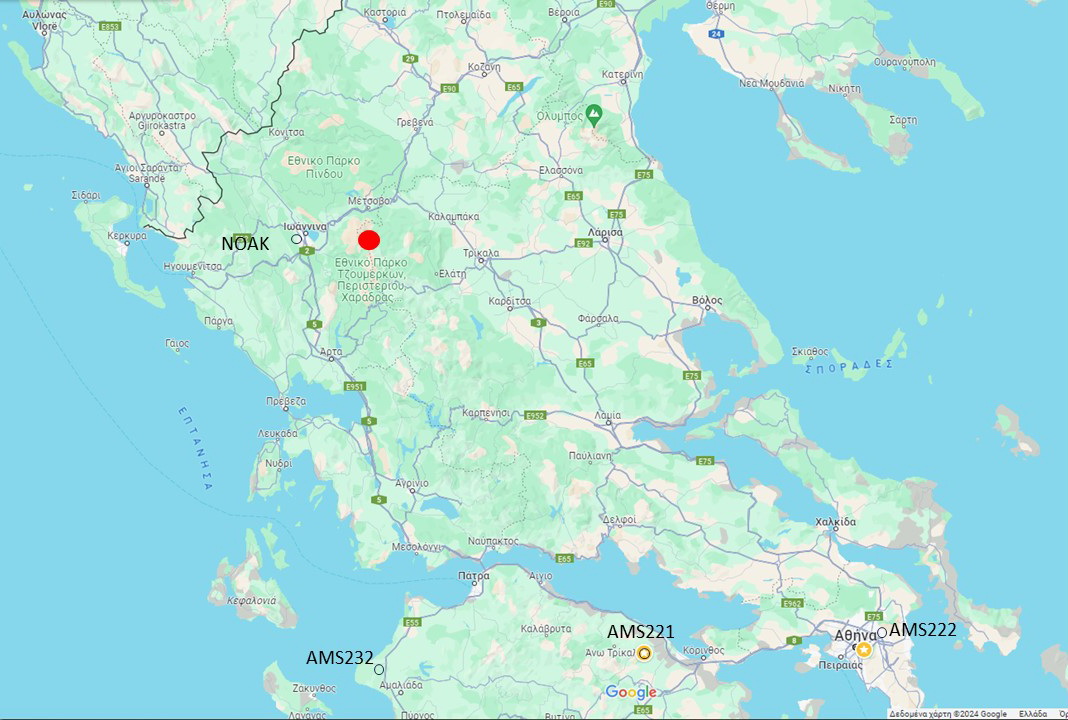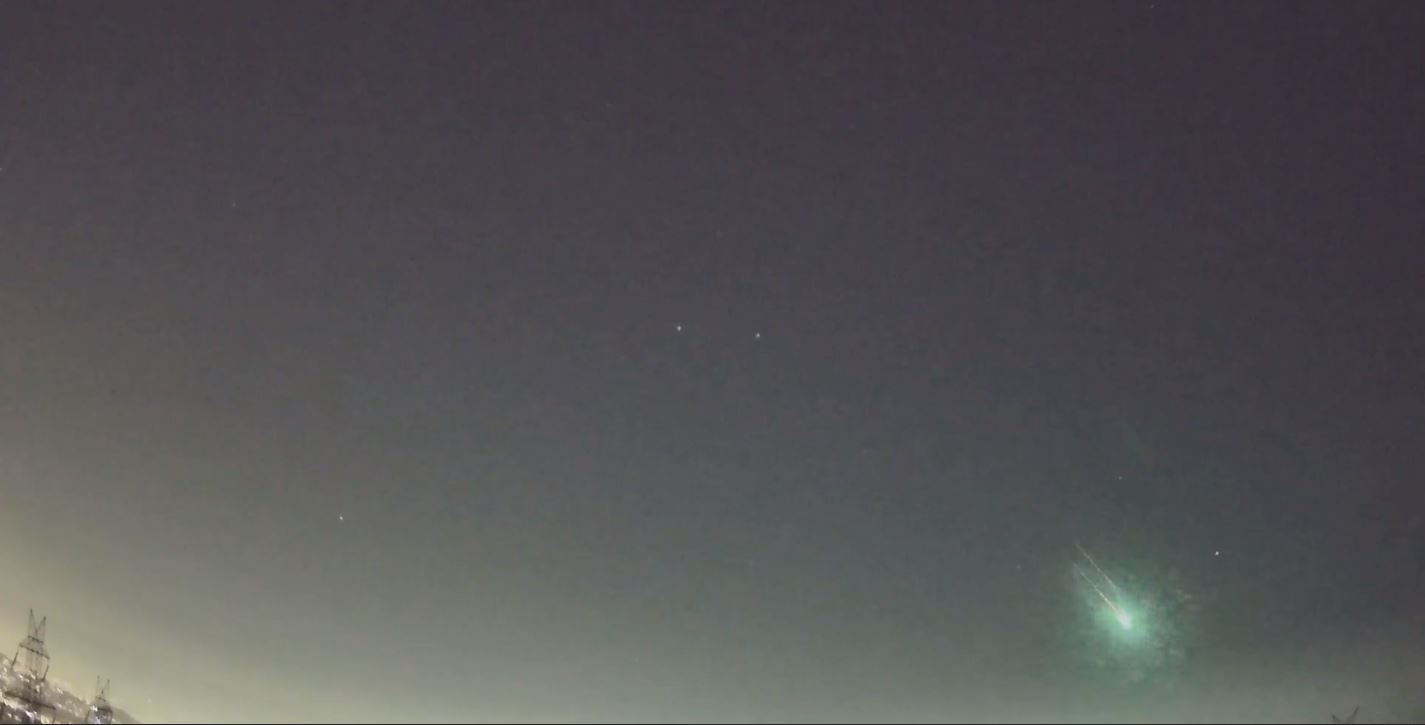Recording of a fireball that likely hit the ground.

In the early hours of February 18, 2024 (03:20 AM) a fireball was captured by four different meteor and fireball tracking cameras. Specifically, it was recorded by the systems AMS221 (Kryoneri Observatory of Corinthia) and ΑMS222 (Penteli Observatory), which belong to IAASARS/NOA (researchers A. Bonanos and A. Liakos), the system ΑMS232 (Stafidokampos of Ilia), which belongs to the Astronomical Society Ilias "Vegas" (V. Paspaliaris, president of the association and postdoctoral researcher at INAF - Arcetri Astrophysical Observatory, Florence, Italy) and from the NOAK observatory system in Ioannina (N. Sioulas). The AMS systems belong to the AllSky7 fireball network, while the NOAK camera system belongs to the Global Meteor Network.
The initial assessment from the combination of the data from the four cameras above is that the meteoroid entered the Greek airspace in the area between Ioannina and the municipality of Kalambaka, south of Metsovo and at an altitude of approximately 80 km from the ground. Due to the brightness of the flare it is possible that a piece of the original body managed to survive the combustion and reached the ground (meteorite). Note that we are referring to the approximate point of entry of the meteoroid into the Earth's atmosphere and not to the area of potential impact. The investigation is coordinated by IAASARS researcher A. Liakos, who is trying to collect information from agencies in the wider area and from security cameras.
The first picture shows the approximate area of the meteoroid's entry into the atmosphere while the second image is a frame of the flare, as recorded from the Penteli observatory.
The initial assessment from the combination of the data from the four cameras above is that the meteoroid entered the Greek airspace in the area between Ioannina and the municipality of Kalambaka, south of Metsovo and at an altitude of approximately 80 km from the ground. Due to the brightness of the flare it is possible that a piece of the original body managed to survive the combustion and reached the ground (meteorite). Note that we are referring to the approximate point of entry of the meteoroid into the Earth's atmosphere and not to the area of potential impact. The investigation is coordinated by IAASARS researcher A. Liakos, who is trying to collect information from agencies in the wider area and from security cameras.
The first picture shows the approximate area of the meteoroid's entry into the atmosphere while the second image is a frame of the flare, as recorded from the Penteli observatory.


